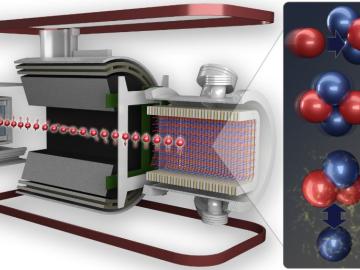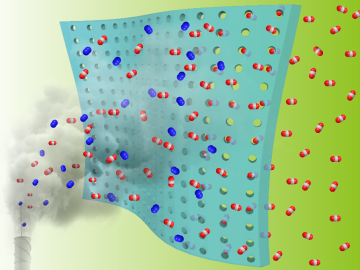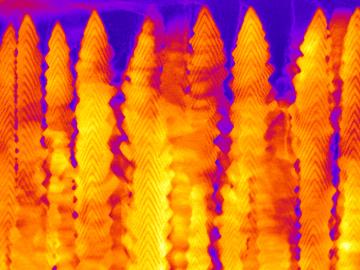
Filter News
Area of Research
- (-) Computational Engineering (2)
- (-) Materials (83)
- Advanced Manufacturing (4)
- Biology and Environment (115)
- Biology and Soft Matter (1)
- Computational Biology (1)
- Computer Science (12)
- Electricity and Smart Grid (3)
- Energy Science (171)
- Functional Materials for Energy (1)
- Fusion and Fission (13)
- Fusion Energy (8)
- Isotopes (1)
- Materials for Computing (14)
- Mathematics (1)
- National Security (33)
- Neutron Science (127)
- Nuclear Science and Technology (15)
- Nuclear Systems Modeling, Simulation and Validation (1)
- Quantum information Science (9)
- Sensors and Controls (1)
- Supercomputing (123)
- Transportation Systems (2)
News Topics
- (-) Advanced Reactors (4)
- (-) Artificial Intelligence (10)
- (-) Clean Water (4)
- (-) Coronavirus (4)
- (-) Environment (16)
- (-) Frontier (3)
- (-) Grid (5)
- (-) Neutron Science (33)
- (-) Quantum Science (11)
- (-) Transportation (14)
- 3-D Printing/Advanced Manufacturing (23)
- Big Data (3)
- Bioenergy (11)
- Biology (4)
- Biomedical (8)
- Buildings (5)
- Chemical Sciences (32)
- Composites (9)
- Computer Science (20)
- Critical Materials (13)
- Cybersecurity (4)
- Energy Storage (34)
- Exascale Computing (2)
- Fusion (7)
- High-Performance Computing (5)
- Irradiation (1)
- Isotopes (13)
- ITER (1)
- Machine Learning (6)
- Materials (73)
- Materials Science (78)
- Mathematics (2)
- Microscopy (27)
- Molten Salt (3)
- Nanotechnology (39)
- National Security (3)
- Nuclear Energy (16)
- Partnerships (11)
- Physics (28)
- Polymers (17)
- Quantum Computing (3)
- Security (2)
- Simulation (1)
- Space Exploration (2)
- Summit (3)
Media Contacts

Through a one-of-a-kind experiment at ORNL, nuclear physicists have precisely measured the weak interaction between protons and neutrons. The result quantifies the weak force theory as predicted by the Standard Model of Particle Physics.

Scientists at Oak Ridge National Laboratory used new techniques to create a composite that increases the electrical current capacity of copper wires, providing a new material that can be scaled for use in ultra-efficient, power-dense electric vehicle traction motors.

Researchers at ORNL used quantum optics to advance state-of-the-art microscopy and illuminate a path to detecting material properties with greater sensitivity than is possible with traditional tools.

Systems biologist Paul Abraham uses his fascination with proteins, the molecular machines of nature, to explore new ways to engineer more productive ecosystems and hardier bioenergy crops.

Five researchers at the Department of Energy’s Oak Ridge National Laboratory have been named ORNL Corporate Fellows in recognition of significant career accomplishments and continued leadership in their scientific fields.

Researchers at the Department of Energy’s Oak Ridge National Laboratory and the University of Tennessee, Knoxville, are advancing gas membrane materials to expand practical technology options for reducing industrial carbon emissions.

A team led by the Department of Energy’s Oak Ridge National Laboratory synthesized a tiny structure with high surface area and discovered how its unique architecture drives ions across interfaces to transport energy or information.

Scientists at the Department of Energy Manufacturing Demonstration Facility at ORNL have their eyes on the prize: the Transformational Challenge Reactor, or TCR, a microreactor built using 3D printing and other new approaches that will be up and running by 2023.

Research by an international team led by Duke University and the Department of Energy’s Oak Ridge National Laboratory scientists could speed the way to safer rechargeable batteries for consumer electronics such as laptops and cellphones.

Oak Ridge National Laboratory researchers have developed a thin film, highly conductive solid-state electrolyte made of a polymer and ceramic-based composite for lithium metal batteries.


